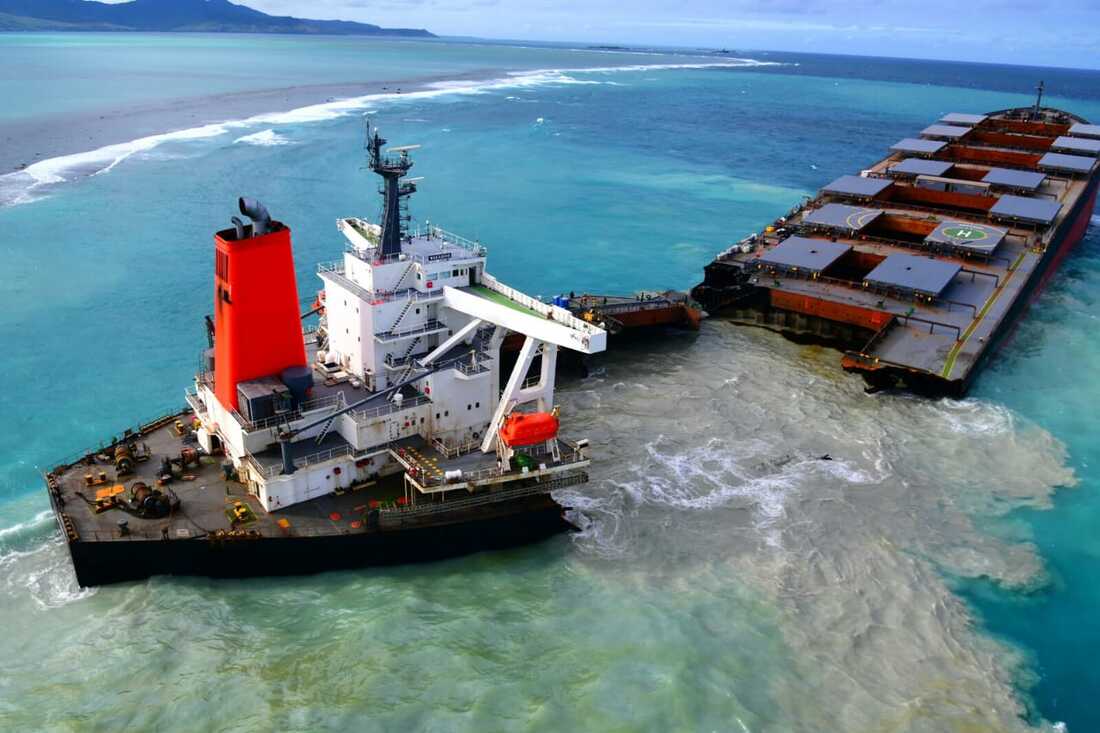|
By Eleanor Lin On July 25, as the United States surged past four million confirmed COVID-19 cases, another disaster was unfolding on the other side of the globe. The ship MV Wakashio ran aground near the island nation of Mauritius. In the following weeks, over 2,000 pounds of oil from the Wakashio leaked into the ocean, polluting almost 20 miles of Mauritius's coastline. This spill has two uniquely vexing characteristics. First, it occurred in proximity to world-renowned and biodiverse mangroves and coral reefs. Second, the spill consisted of a new type of oil called very low sulfur fuel oil (VLSFO). Ordinary Mauritians have taken a leading role in the subsequent cleanup, including rapidly improvising floating booms to contain the oil. Nagashiki Shipping, which owns the Wakashio, predicts that cleanup of oil from the ocean surface and coastline will be finished by January 2021. Nevertheless, it is highly unlikely that cleanup efforts will ever recapture 100 percent of the pollution spilled. Water-soluble chemicals have a tendency to stay dissolved in the ocean, rather than coming along for the ride with any oil that is successfully removed; such pollutants will likely linger for years to come. Thus, Mauritius has accidentally become the first real-world testing ground for the long-term effects of a VLSFO spill. VLSFO was introduced for use by ship engines with the eco-protective goal of reducing acid rain. When normal sulfur-containing crude oil is burned, it produces sulfur oxide gases of the chemical formula SOx (where "x" denotes that multiple ratios of sulfur to oxygen are possible). These sulfur oxides can react with water to produce acid rain, which harms both plants and aquatic life. In order to curb sulfur oxide emissions, the International Maritime Organization (which regulates global shipping) gradually began tightening regulations on fuel oil sulfur levels in 2005. "Low sulfur" oil sounds great in principle, but in the end, it is still oil. Oil spills are devastating to both marine life and humans. When marine animals consume oil, it can stunt growth and reproduction or (in the most severe cases) result in lethal poisoning. When marine mammals and birds are slicked with oil, their fur and feathers lose their effectiveness as insulators, resulting in hypothermia. When chemicals from oil accumulate in fish and shellfish, they become unsafe for humans to eat. This has already been observed in Mauritius, where high arsenic levels following the spill prevented local fishing, an important income and food source. Citizens' efforts to help cleanup have come at a cost to their health. Symptoms such as difficulty breathing, dizziness, confusion, and nausea were reported in the immediate aftermath of the spill. There could also be longer-term negative effects on physical and mental health, due to long-term pollution exposure and the psychological effects of economic and environmental damage. The efforts of ordinary Mauritian citizens to support cleanup and hold authorities accountable for their handling of the crisis have transformed into some calls for a reevaluation of Mauritius's entire system of government. Moving forward, a detailed chemical analysis of the oil spill site will be crucial to guiding cleanup efforts and protecting people's health: this analysis will provide information about which compounds make up the spill, and in what concentrations. The first such analysis was published in late October by the Woods Hole Oceanographic Institution, in collaboration with the Western Australian Organic Isotope Geochemistry Centre and Curtin University. Luckily, the scientists found relatively low levels of cancer-causing compounds called polycyclic aromatic hydrocarbons (PAH). The information about the types and concentrations of chemicals from the spill will help scientists link future pollutant samples back to the same source. How can Mauritius's unique biomes be better protected in the future for the benefit of all the island's inhabitants? Stricter bans on single-hulled vessels near such vulnerable sites is one possibility. Double-hulled vessels have two structural layers separating their cargo from the ocean, reducing (although not eliminating) the risk that running aground or colliding with another ship will result in a catastrophic oil spill. Oil tankers are usually double-hulled, but many cargo ships such as the Wakashio still have single hulls and still carry significant amounts of oil. Had the Wakashio been double-hulled, the spill might not have been as disastrous. Preventable human error has also been implicated in the spill. The ship's planned route was along a highly frequented shipping lane to the southeast of the island, but the captain changed course to take the ship nearer to the shore, which is what brought it so dangerously close to the reef where it ultimately met its fate. In August, the captain was arrested and charged in Mauritius for "endangering the safe navigation of a vessel." Thanks to better regulation, the annual number of oil spills worldwide is dropping. However, oil spills caused by collisions are rising, perhaps due to increased marine traffic. In the past decade, 44 percent of large oil spills (defined as those involving over 7 metric tons of oil) have been caused by collisions, either between ships or, as in the case of the Wakashio, with an underwater obstacle such as a reef. And while the volume of oil spilled each year is decreasing, the example of the Wakashio shows that even a relatively small spill can have major impacts.
0 Comments
Leave a Reply. |
Categories
All
Archives
April 2024
|

